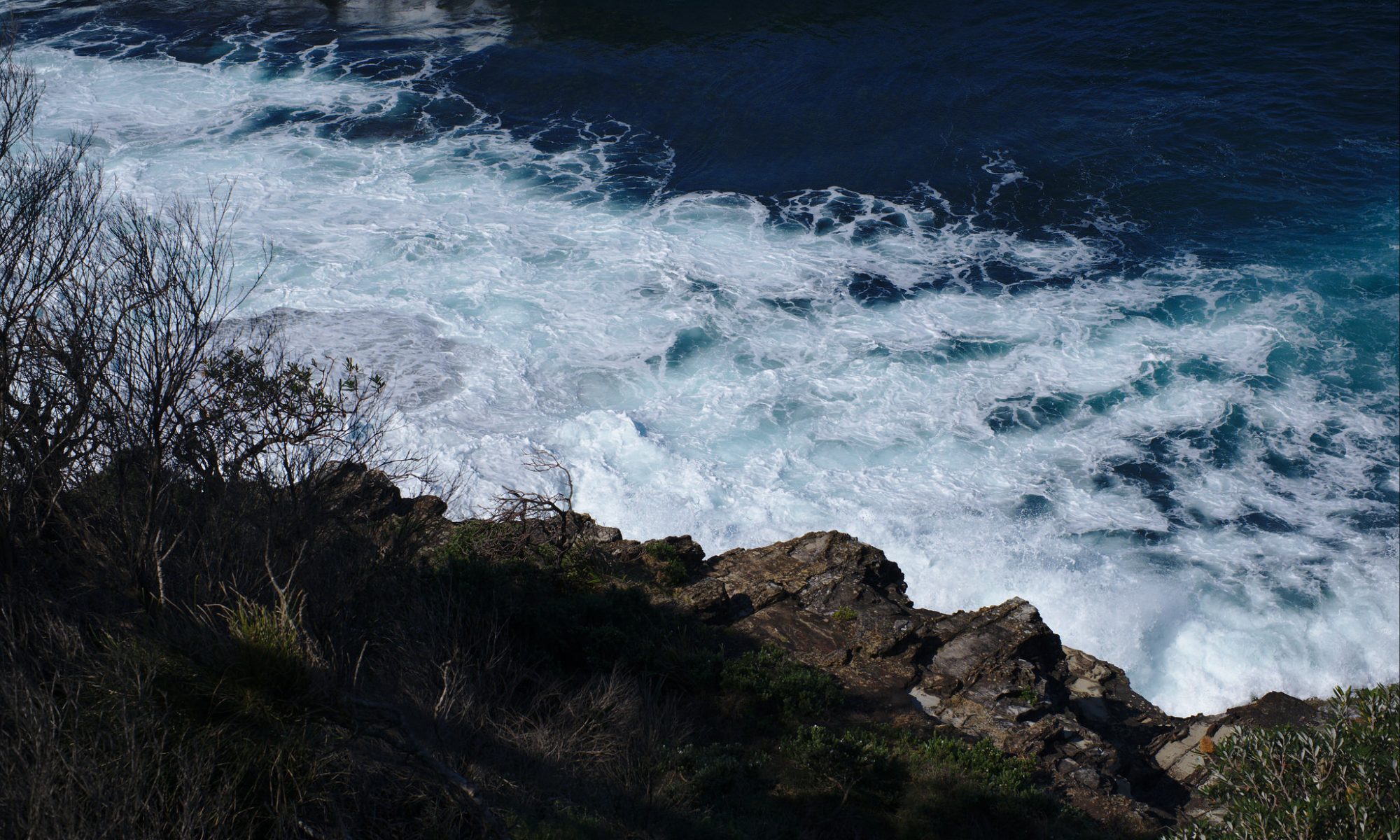This article originally appeared on Hoyden About Town.
I’m hoping to blog a little about SCUBA diving here occasionally. I dived on Wed December 29 for the first time in a year and a half (diving is contraindicated in pregnancy and was practically difficult with a young baby to care for and a body rearranging itself too often for a wetsuit fitting).
How did I elect to return to diving? Shark diving!
This is much less adventurous than it sounds, although definitely stressful or impossible for people with a shark phobia. (I’ve also dived with sea snakes—which are, yes, very very venomous, and quite inquisitive and tame so you get very near them, but they’re not aggressive at all—just don’t ever make me touch a slug in the garden because that is my critter limit!)
I’ve been in the water with a lot of sharks: leopard sharks, wobbegongs, Port Jackson sharks, grey and white tipped reef sharks and grey nurse sharks. This isn’t done in cages as you see with great whites, we’re in the ocean together. The trick is the size of the mouth: if a human limb doesn’t fit in there, there’s not much of a problem. Most species of shark are after much smaller prey than humans, the main exceptions are species that hunt seals. It’s also good to know that sharks generally sleep during the day (Port Jackson sharks look like very large cuddly toys, sleeping on the seafloor), and that they find the loud noise of SCUBA rather intimidating, although I have also dived at night when the reef sharks were hunting, but again, their prey is small. (Diving at night, also not as difficult as it sounds, but extremely cool.) I’ve also dived with seals, there’s a fairly simple rule for that, which is that if you notice none of the seals are in the water, you probably ought to follow their example and get out too.
What’s a scary thing I’ve encountered diving? That dreaded apex predator homo sapiens. I was not pleased to find that I’d been diving in murky water below people spearfishing one time. I hope they could see me better than I could see them.
Homo sapiens is of course the big threat to today’s Endangered Sunday species, the grey nurse shark or carcharias taurus. These are big, scary looking sharks (adults are between 2 and 3 metres in length), and if I wanted to impress you with my shark braving skills, I could show you this:

Image description: a grey nurse shark is seen from in front and below, its head and fins lit from below, emphasising the teeth visible in its jaws.
Grey nurse sharks are quite timid, docile sharks. There’s a group living in a cave just off Magic Point at the south end of Maroubra at a depth easily accessible to recreational SCUBA divers. It is a very popular site with divers in Sydney. On the 29th there were five sharks in the cave. We didn’t join them: the cave is a protected habitat. It’s not quite up there with Michael McFadyen’s 2008 sighting of 26 sharks, but more than I’ve seen there on the six or so times I’ve dived the site.
The grey nurse shark is listed as critically endangered on the east coast of Australia, with the population estimated at somewhere around 1000 individuals. In 2009 it was reported (the original article is Ahonen et al. (2009)) that there is also low genetic variability on the east coast and that it likely does not interbreed with the west coast sharks .
Grey nurse sharks are ovoviviparous: they give birth to live young (-viviparous), which have grown inside eggs (ovo-) and hatched inside the mother. The two shark pups a female births are the result of adelphophagy: pre-birth cannibalism. Each of the surviving shark pups has consumed its siblings until it was the sole surviving pup in its uterus (of which the mother has two). This process takes up to a year and results in a reproductive rate that means the return from critically endangered levels is going be slow if it happens at all. There is some research into an artificial environment for the sharks to mature to birth size in. These environments have been successfully tested on dwarf wobbegongs.
Here are two more pictures of grey nurse sharks taken at Magic Point. Doug Anderson took these lovely shots of, I think, the sharks in the cave (the angle isn’t quite wide enough to tell on these two):

Image description: a large and a small grey nurse shark, close to the bottom of the ocean, side on to the camera. A school of fish is in the foreground.

Image description: four grey nurse sharks are clearly seen side-on between one and three metres above the ocean floor. The outlines of two more sharks are in the background, in dim light, presumably in the cave.
Both Doug Anderson and Richard Ling have shots of the sharks with hooks in their mouths: not happy and A Grey Nurse Shark (Carcharias taurus) with hook and exit wound in the jaw.
So there you have it, big, scary looking but not dangerous: a perfect diver’s day out. May their numbers continue to increase and the number of hooks and wounds seen in their jaws fall.
Ahonen et al. (2009) Nuclear and mitochondrial DNA reveals isolation of imperilled grey nurse shark populations (Carcharias taurus) in Molecular Ecology Volume 18, Issue 21, pages 4409–4421, doi:10.1111/j.1365-294X.2009.04377.x)
